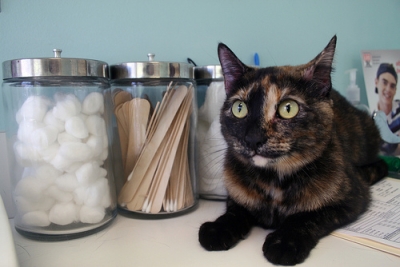
Valley Fever (Coccidioidomycosis) is caused by a fungus – Coccidioses – that lives in the soil of mainly dry areas. It is commonly found in the Southwest United States and parts of Mexico, Central America and South America.
Inhalation of the airborne fungal spores usually begins the infection in the lungs. Symptoms are similar to other conditions and may not appear until 3 weeks after exposure. Puppies and dogs who are immune-compromised can develop symptoms much sooner.
Signs in dogs can begin with a cough sometimes producing phlegm, fever, lethargy, decreased appetite. If not treated symptoms progress to inappetance, weight loss, high fever, pneumonia, joint problems including swelling of the limbs, lameness and inability to move, seizures, back or neck pain, swollen lymph nodes under the chin, front of shoulder blades, behind stifles(knees), painful eye inflammation.
Cats can get valley fever although it is estimated that for every 50 cases diagnosed in dogs there is one case in cats.
Symptoms in cats are usually skin lesions that don’t heal, inappetance, weight loss, fever, lethargy, difficulty or rapid breathing, coughing, limping, behavioral changes.
Diagnosis for cats is made with chest x-rays, blood tests, biopsies of skin lesions.
Treatment for both cats and dogs consists of oral antifungal medications – Ketoconazole (Nizoral), Itraconazole (Sporanox), Fluconazole (Deflucon) and others. Fluconazole is the one with least side effects and is currently used most of the time. Discuss any side effect with your vet.
Most dogs treated early with antifungal medications recover. However valley fever can relapse. Dogs in which the disease has progressed often need hospitalization and may have to take medication for life. Prognosis is guarded. Cats usually hide symptoms well and may not be diagnosed until the disease has progressed.
Diagnosis is made through blood tests which include a valley fever blood test, chest x-rays, bone and joint x-rays, fluid cultures, biopsies, CT or MRI brain and spinal cord scan.
If you live in any of the typical valley fever areas or have traveled to them with your pet, and your dog or cat shows any symptoms, a valley fever test is indicated.
While both animals and humans can have valley fever, it is not contagious between animals nor is it contagious to humans. The fungal spores must be inhaled for the disease to develop. However people who are immune-compromised should consult their doctors.



